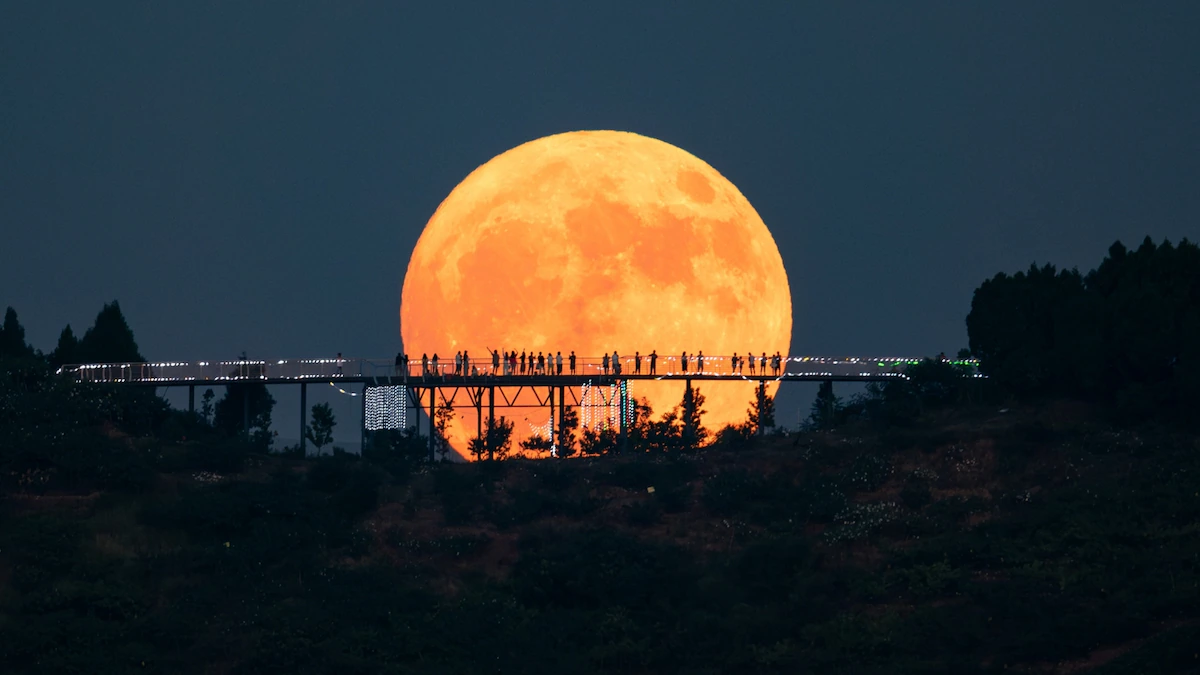Copyright National Geographic

On November 4, the moon will put on its brightest and largest show of the year. It’s the second in a series of three consecutive supermoons closing out 2025. Sometimes called the “beaver moon,” this full moon’s name—traditionally used by various Indigenous peoples of North America—marks the season when beavers build their winter lodges and when trappers once set out before rivers froze over. The size difference might be subtle to the naked eye, but the added brilliance will be unmistakable—bright enough to cast faint shadows and light up the night from dusk to dawn. Why this supermoon stands out This week’s full moon isn’t just close—it will orbit about 17,000 miles nearer to Earth than average. That makes it appear about seven percent larger and up to 16 percent brighter than a typical full moon. A supermoon occurs when the moon reaches its full phase while near perigee, the closest point in its elliptical orbit around Earth. The technical term for this alignment is a perigee full moon. But not all supermoons are created equal. Some occur when the moon is near perigee, but not perfectly aligned with the full phase, which lessens the apparent size and brightness. When the moon is at apogee —the farthest point in its orbit from Earth —the result is a smaller, dimmer micro full moon. (Earth doesn’t really have a second moon—but here’s what would happen if we did.) November’s moon, however, reaches peak fullness almost simultaneously with its closest approach to Earth, creating the ideal combination for an impressive supermoon spectacle. The added brightness is enough to wash out fainter stars and even cast faint shadows on the ground, a rare effect visible only during the most intense supermoons. The moon won’t appear this large and bright again until November 24, 2026, when the next “beaver moon” reaches a similarly close orbit. Tips for viewing and photographing the supermoon Viewing this supermoon doesn’t take special equipment, but these tips can help you get the most out of the experience. While the moon officially reaches full phase on November 5 at 13:19 UTC, the most magical time to view it is in the first hour just after the moon climbs above the eastern horizon. (Here’s how to take stellar photographs of the night sky.) At that low angle, the “moon illusion” makes it appear larger than it truly is —an optical quirk that occurs when our brains compare the moon with nearby landmarks such as trees or buildings. Its low position also gives it a golden-orange hue, caused by Earth’s atmosphere scattering shorter blue wavelengths and letting warmer tones dominate. For photographers, moonrise offers a prime opportunity to capture dramatic lunar portraits, framed by earthly landscapes lit by it. Even with just a smartphone, it’s worth experimenting with silhouettes of trees, rooftops, or people in the foreground, all of which add scale and drama to your shots. Bonus stargazing Throughout the night, the moon will appear within the bright zodiacal constellation Taurus, the bull. To the naked eye, its glow can drown out nearby stars—but if you cover the moon with your thumb or use binoculars, look for the vivid orange star Aldebaran, a red giant about 65 light-years away that marks the bull’s fiery eye. (Here are nine other night sky events to see in November.) Between the moon and Aldebaran lies one of the sky’s most famous sights: the Pleiades, or Seven Sisters, a shimmering star cluster roughly 330 light-years from Earth. The three objects—the moon, Aldebaran, and the Pleiades—form a striking celestial triangle visible for much of the night. So, when looking up at Earth’s companion hanging in the sky, it’s humbling to think how natural cycles connect us all to both the science and the ancient rhythms of our universe. LIMITED TIME OFFER



